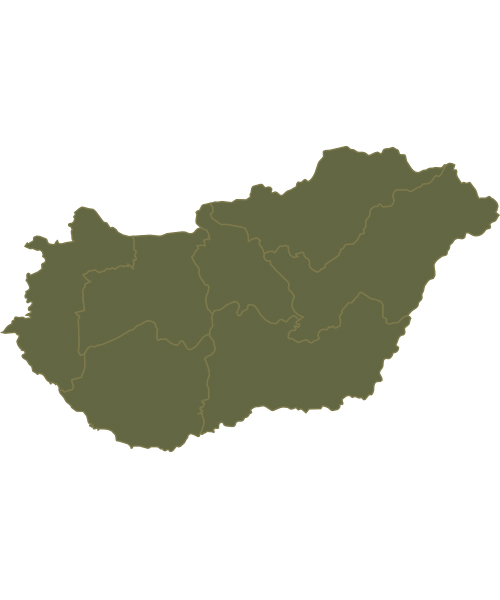Hungarian wine has a history dating back to the Kingdom of Hungary. Outside Hungary, the best-known wines are the white dessert wine Tokaji aszú (particularly in the Czech Republic, Poland, and Slovakia) and the red wine Bull’s Blood of Eger (Egri Bikavér).
Several varieties of grape are known to have originated in Hungary. These are: Ezerjó, Hárslevelű, Hárslevelű, Cserszegi fűszeres, Királyleányka, Zenit.
Hungary’s most famous wine region lies in the foothills of the Zemplén Mountains of the far north of the country – in fact the traditional area crosses into the southeast corner of modern Slovakia. The area is notable for its long warm autumns and mists that come in from the River Bodrog, creating perfect conditions for noble rot. This can contribute towards creating the botrytised (‘aszú’) grapes for which the region is famous. These are individually picked as late as mid-November into buckets (‘puttonyos’) and crushed to a paste. Varying amounts of this aszú paste are then added to non-aszú must or wine made from a mix of Furmint, Hárslevelű, Muscat Blanc à Petits Grains, Kövérszőlő or Zéta grapes, and left to ferment. The resulting wine is then aged in relatively small barrels in a labyrinth of cellars in the soft volcanic tuff, on whose walls thick blankets of fungus regulate the humidity.

Hungarian wine has a history dating back to the Kingdom of Hungary. Outside Hungary, the best-known wines are the white dessert wine Tokaji aszú (particularly in the Czech Republic, Poland, and Slovakia) and the red wine Bull’s Blood of Eger (Egri Bikavér).
Several varieties of grape are known to have originated in Hungary. These are: Ezerjó, Hárslevelű, Hárslevelű, Cserszegi fűszeres, Királyleányka, Zenit
Hungary’s most famous wine region lies in the foothills of the Zemplén Mountains of the far north of the country – in fact the traditional area crosses into the southeast corner of modern Slovakia. The area is notable for its long warm autumns and mists that come in from the River Bodrog, creating perfect conditions for noble rot. This can contribute towards creating the botrytised (‘aszú’) grapes for which the region is famous. These are individually picked as late as mid-November into buckets (‘puttonyos’) and crushed to a paste. Varying amounts of this aszú paste are then added to non-aszú must or wine made from a mix of Furmint, Hárslevelű, Muscat Blanc à Petits Grains, Kövérszőlő or Zéta grapes, and left to ferment. The resulting wine is then aged in relatively small barrels in a labyrinth of cellars in the soft volcanic tuff, on whose walls thick blankets of fungus regulate the humidity.
Tradesa Corp.
618A Fleet St., Toronto, Ontario, Canada
M5V 1B9
Phone
416.944.WINE (9463) / 416.924.VINO (8466)
Fax: 416 928 0908
